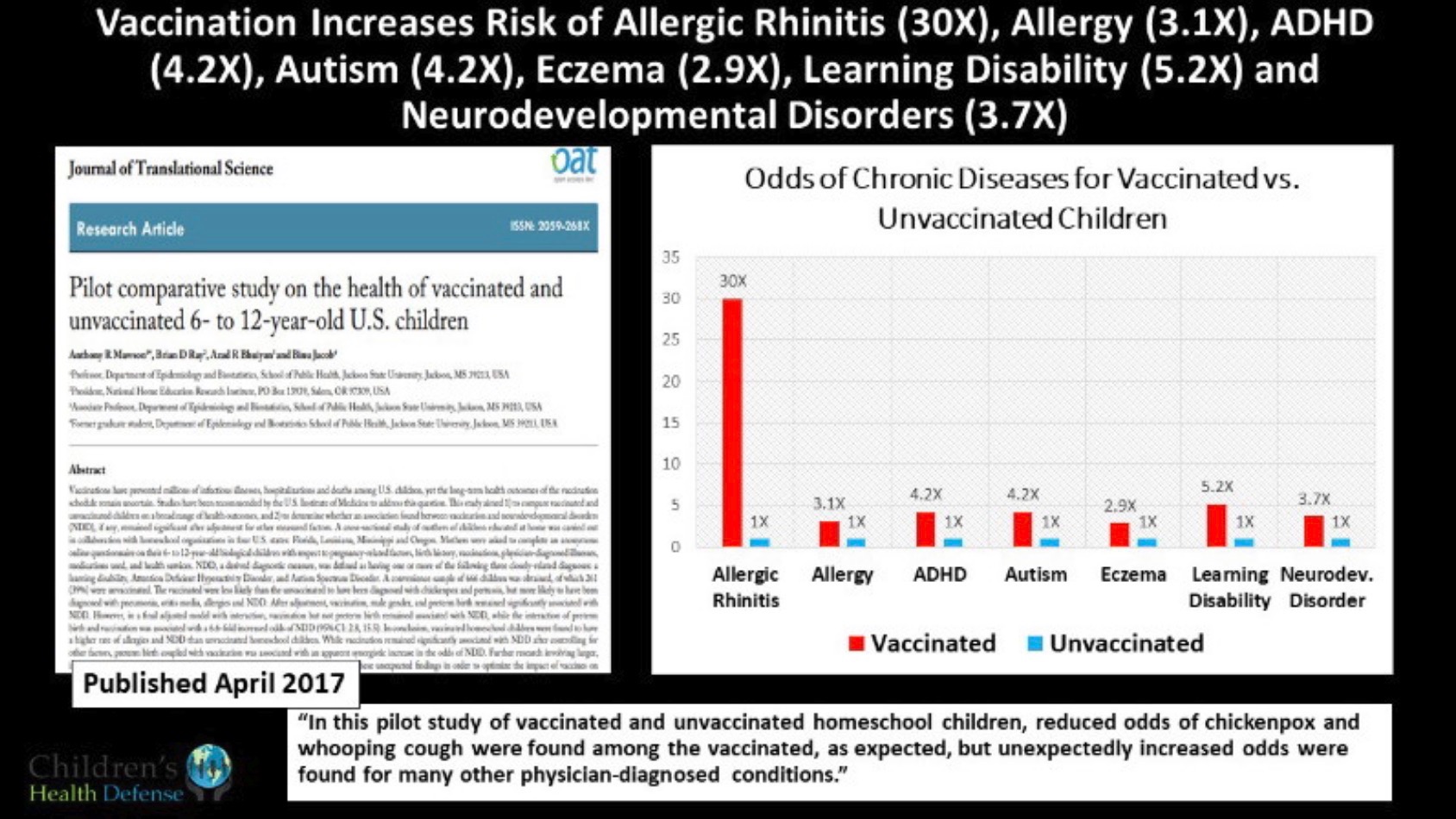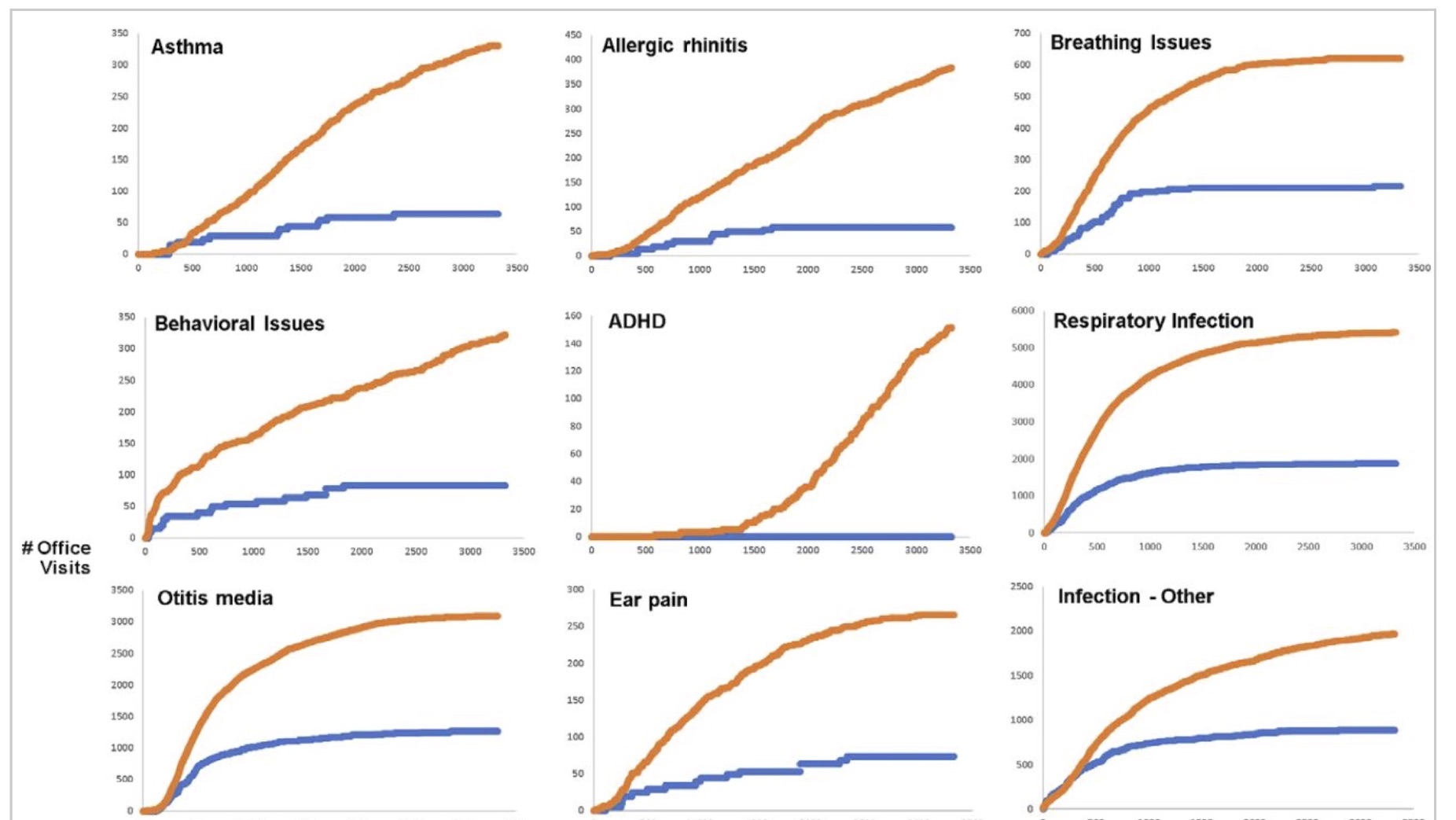False
The few paediatricians who support families that don’t, or minimally, vaccinate their children, have long been aware the radical difference in the health of their unvaccinated, compared to their vaccinated, patients.
The majority of paediatricians, because they routinely vaccinate, have never seen this difference.
The difference in the health of vaccinated and unvaccinated children has not been adequately studied scientifically in the US or Australia.
Until similar Australian studies are done and can be shown here, the evidence from US studies must suffice.
In 2020, the US CDC was forced to admit that they have no record of any studies comparing the health of vaccinated and unvaccinated children.
This difference in health has never been fully researched, however several small studies have produced shocking results:
A) A study of 600 home-schooled children in four US states showed that vaccinated children had:
- chickenpox four times less often,
- whooping cough three times less often, and
- rubella ten times less often than unvaccinated children.
However, while there are only minimal consequences to children contracting chickenpox and rubella, those same vaccinated children, when compared with the unvaccinated, were found to have considerably more other illnesses:
- ear infections four times more often,
- pneumonia six times more often,
- allergic rhinitis 30 times more often,
- allergies and encephalitis 4 times more often,
- eczema 3 times more often,
- learning disabilities 5 times more often,
- neuro-developmental disorders, including ADHD, 4 times more often, and
- some form of chronic illness 2.5 times more often.
These children also visited a doctor due to illness 3 times more often, were hospitalized 1.8 times more often, and used:
- allergy medications 21 times more often,
- fever medications 4.5 times more often,
- ear-drainage tubes 8 times more often and
- antibiotics 2.5 times more often.

B) A second small 2020 study by Hooker and Miller similarly showed that vaccinations were associated with increased odds of developmental delays, asthma, and ear infections.
C) A third study, also in 2020, followed 3,344 children in an integrative pediatric practice comparing the ten-year history of office visits of a highly vaccinated group (orange in the graphs below) with an unvaccinated group (blue in the graphs). While it’s still online, the editors have since marked the paper as “retracted” with no explanation or criticism of any of the findings.
A more recent study vindicated this erroneous retraction.
These graphs show the difference in these populations.
Note: the horizontal axis is age in days (click image to enlarge).
D) Still another pilot study, The Control Group Litigation, is designed specifically for a lawsuit in California that intends to stop, at a federal level, the nationwide march by many states to copy California in mandating the CDC vaccination schedule for children to attend school. Using a set of infographics, it graphically shows similar results (scroll down to “Our Case Documents” to see them).
In 2022, despite their impressively strong case, the apparently corporate-controlled US Supreme Court refused to hear them.
A Video Compilation
A 14-minute illustrated video, “Do Vaccines Make Us Healthier?” summarized the findings from several of the above studies in more detail.
The original version on YouTube had over 50,000 views before it was censored. The above link now access a 2024 22-minute expanded version.
Here is a set of graphics compiling many related studies on different vaccines, which show how complex this issue is.
Conclusion
Only the US Dept of Health and Human Services has access to a large enough set of data that would be needed for incontrovertable proof that vaccines inprove children’s health.
Since they could have easily shown that vaccinations improve children’s overall health decades ago, why haven’t they done so?
One logical conclusion is that they have actually looked at these data and do not want the findings to be known.
HHS Secretary, Robert F. Kennedy, Jr, has promised to make such a study public.
Medical science has made such tremendous progress that
there is hardly a healthy human left. —Aldous Huxley